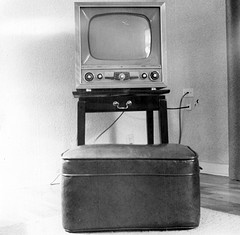 The U.S. Environmental Protection Agency (EPA) on Wednesday announced an upgrade to its Energy Star requirements for televisions, and cable and satellite boxes. According to a press statement from the agency: Effective in September 2011, these products must be 40 percent more efficient than conventional models in order to win the Energy Star label. Energy Star expects to update 20-some other product requirements this year.
The U.S. Environmental Protection Agency (EPA) on Wednesday announced an upgrade to its Energy Star requirements for televisions, and cable and satellite boxes. According to a press statement from the agency: Effective in September 2011, these products must be 40 percent more efficient than conventional models in order to win the Energy Star label. Energy Star expects to update 20-some other product requirements this year.
Manufacturers of TVs, cable and satellite boxes in the U.S. don’t have to comply with the new Energy Star standards — unless they want their products to be eligible for rebates, like those highlighted by regional availability on GreenOhm.com and a number of government websites run by states with rebate programs.
Television manufacturers do have to label their sets with information about how much energy they consume annually, and how that compares to a range of similar models, under the Federal Trade Commission’s Appliance Labeling Rule that takes effect on May 10, 2011.
According to market research by In-Stat (recently acquired by The NPD Group), set-top box shipments in North America slowed in 2010, and the trend is likely to continue this year. The NPD Group reported, however, that 2011 holiday sales of television sets, in particular:
“The 46-47-inch flat-panel TV segment was the fastest-growing for the holiday, increasing 31 percent in units. Sales of TVs above 50 inches also showed strong growth with volume jumping 21 percent propelled by exciting new technologies such as 3D, Internet connectivity, and LED backlighting.”
The FTC is still considering energy-related labeling requirements for manufacturers of personal computers, cable or satellite set-top boxes, stand-alone digital video recorders, and personal computer monitors .
Image: 1950s era television set, via John Atherton